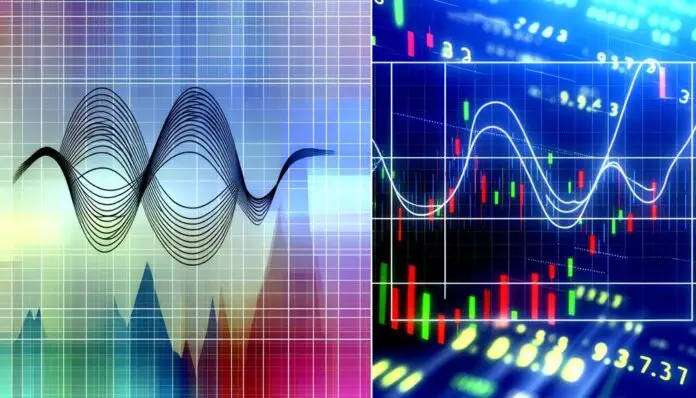In the complex world of technical analysis, it is not uncommon to find yourself having to choose between subtle variations of the same element, especially when deciding to use the stochastic oscillator or the relative strength index (RSI). These tools have been designed to highlight market momentum and possible changes in price, although they use notably different approaches to accomplish this goal.
The stochastic oscillator might give you a quicker pulse on market sentiment by comparing a closing price to its price range over a certain period, while the RSI serves as a gauge of price movement intensity, balancing the scales of recent gains and losses.
You might find yourself wondering whether the heightened sensitivity of the stochastic oscillator aligns better with your trading strategy, or if the more moderated perspective of the RSI offers the clarity you need. To make an informed decision, you'll need to weigh the subtleties of each indicator—how they can complement each other, or lead to contradictory signals when you're navigating the choppy waters of market analysis.
Key Takeaways
- Stochastic and RSI are both trading indicators used to identify market trends and turning points.
- Stochastic is more reliable in range-bound markets, while RSI is better for strongly trending markets.
- Stochastic can provide buy signals when the %K and %D lines crossover, while RSI near 70 suggests overbought conditions and RSI near 30 indicates oversold conditions.
- Stochastic and RSI should be used in conjunction with other technical tools and analysis methods to validate signals and enhance the decision-making process.
Understanding the RSI Indicator
The RSI indicator, created by J. Welles Wilder Jr. in 1978, is a critical tool that measures the momentum of price movements by comparing the magnitude of recent gains to recent losses. This momentum indicator, known as the relative strength index (RSI), is one of the staples among technical analysis tools. You'll find it particularly useful when you're trying to determine the strength behind a trend or looking for potential reversals in the market.
Essentially, the RSI helps you identify overbought and oversold levels. It's presented as a line on a graph that moves between 0 and 100. An RSI reading above 70 suggests that an asset might be overbought, implying it could be due for a pullback or reversal. Conversely, a reading below 30 indicates potential oversold conditions, hinting that an upward move might be on the horizon.
You'll see the RSI plotted below the price chart, providing a visual representation of momentum over time. But don't be fooled by its simplicity—the RSI is powerful. It helps spot divergences between price movements and momentum, offering clues that the current trend might be weakening and a reversal could be in the making.
Exploring the Stochastic Oscillator

While the RSI provides insights into the momentum of price movements, the Stochastic Oscillator offers a unique perspective by comparing the current closing price to its price range over a specific period. This oscillator was developed by George Lane in the late 1950s. It don't just measure the price of the asset but focuses on the speed and magnitude of recent price movements, often signaling a potential market turn before it occurs.
The Stochastic Oscillator is characterized by two lines: %K and %D. The %K line measures the current closing price relative to the high-low range over a set number of periods, while the %D line is a moving average of the %K, providing a signal line to anticipate turns. When either line rises above 80, the asset is considered overbought, and when it drops below 20, it's seen as oversold. These thresholds can signal a reversal or a weakening trend.
Here's a table that simplifies the key aspects of the Stochastic Oscillator:
| Aspect | Description |
|---|---|
| %K and %D | Two main lines of the oscillator, with %D being a moving average of %K |
| Overbought | Above 80, potential for a downward turn |
| Oversold | Below 20, potential for an upward turn |
| George Lane | Developer of the Stochastic Oscillator |
| Price Range | The range over which %K is calculated |
As one of the popular trading indicators, the Stochastic Oscillator helps you grasp how current prices compare to past price action. It's a valuable tool, especially when combined with other analyses, to increase the precision of your trading decisions.
Analyzing Stochastic Vs RSI Signals

When comparing Stochastic and RSI, you'll find that each serves as a distinct beacon, signaling overbought or oversold conditions with varying degrees of sensitivity and time frames in mind. Both are used in technical analysis but in different ways. The key differences stem from how they process price changes and what they suggest about market momentum.
Stochastic, comprising two lines known as %K and %D, is a momentum indicator that reflects the level of the closing price relative to the high-low range over a certain period. It's more reactive to immediate price changes, making it ideal for short-term trading decisions. On the other hand, RSI measures the speed and change of price movements, typically over a 14-day period, and is better suited for identifying longer-term trends.
To get a deeper understanding, consider these differences between the two:
- Sensitivity to Price Movements: Stochastic is generally more sensitive than RSI, leading to frequent buy and sell signals.
- Time Frame Suitability: RSI is better for long-term outlooks, while Stochastic caters to short-term market analysis.
- Overbought/Oversold Thresholds: Stochastic RSI, a hybrid indicator, combines the best of both worlds, indicating overbought (>0.8) or oversold (<0.2) with more specificity.
- Historical Performance Evaluation: Stochastic RSI tends to give a more detailed assessment based on a security's historical performance.
Stochastic RSI Hybrid Indicator

Diving into the Stochastic RSI Hybrid Indicator, you'll uncover a tool that fine-tunes the power of the traditional RSI by integrating the sensitivity of the Stochastic oscillator. This fusion creates a price oscillator that's more sensitive to price movements than the standard RSI alone.
Developed by Tushar Chande and Stanley Kroll, the Stochastic RSI applies the core of the Stochastic formula to RSI values, enhancing the original indicator's ability to pinpoint overbought or oversold conditions.
When trading, you're constantly seeking edges, and the Stochastic RSI offers precisely that. It signals overbought situations when readings rise above 0.8 and suggests oversold conditions below 0.2. These thresholds indicate extremes in the recent RSI readings, giving you a sharper picture of the market's momentum.
This hybrid indicator is particularly useful for identifying short-term trends. Observing its position relative to the 0.50 centerline can clue you in on the prevailing direction of price action. But remember, as with all trading indicators, it's crucial to use the Stochastic RSI in conjunction with other technical tools. This cross-referencing can significantly enhance your decision-making process.
It's also worth noting that while StochRSI and RSI both aim to provide valuable trading signals, they aren't interchangeable. Each uses different formulas, responds to volatility uniquely, and may align better with some trading strategies than others. You should be aware that most investor accounts lose money when trading without proper understanding of these tools. Therefore, it's essential to familiarize yourself with both indicators on your charting platforms before incorporating them into your trading arsenal.
Practical Applications and Limitations

You'll find that both the Stochastic and RSI indicators serve as essential tools for identifying market trends and potential turning points in your trading strategy. Their practical applications are numerous, but like any tool, they come with limitations that you must be aware of to trade effectively.
When you're analyzing the markets, consider the following:
- Stochastic uses two lines, %K and %D, to signal overbought or oversold conditions. A crossover of these lines can provide a buy signal, but you should watch for higher lows or lower lows to confirm the strength of the trend.
- RSI, on the other hand, measures the speed and change of price movements. RSI is near 70, it suggests overbought conditions, while an RSI near 30 indicates oversold conditions. If RSI falls but the price forms a higher low, it may indicate a potential bullish divergence.
- In trending markets, Stochastic can give false signals; it's more reliable in range-bound markets. Always use it in conjunction with other analysis methods to reduce the risk of false signals.
- RSI is less prone to false alarms than Stochastic in a strongly trending market, as it's more attuned to picking up on actual reversals rather than temporary fluctuations.
However, you must also consider these limitations:
- False signals are a common issue, especially in volatile markets.
- RSI and Stochastic may lag behind real-time price movements.
- Overreliance on these indicators without confirmation can lead to poor trading decisions.
- Sensitivity settings for Stochastic and RSI can affect the frequency of signals and their usefulness for different trading styles.
Frequently Asked Questions
Can I Use RSI and Stochastic Together?
You can integrate RSI and Stochastic to boost trading efficiency, using divergence detection for trend confirmation, comparing momentum, and refining entry signals and exit strategies amid overbought conditions or oversold scenarios, enhancing signal reliability.
Is Stochastic RSI Better Than Macd?
You're comparing Stochastic RSI to MACD for trading accuracy. While both assess momentum and market signals, Stochastic RSI excels in revealing overbought/oversold conditions and providing early entry/exit points due to its sensitivity to volatility.
What Are the 2 Lines in Stochastic Rsi?
The two lines in Stochastic RSI indicate momentum shifts and are used for spotting oversold or overbought conditions, divergence analysis, and signal crossovers, providing entry and exit strategies with trend confirmation and indicator sensitivity.
What Is the Meaning of Stochastic 14 3 3?
Stochastic 14 3 3 is your tool for chart analysis, offering overbought signals, oversold conditions, and trend confirmation. Its parameters and smoothing factor refine trading strategies through momentum comparison and signal divergence.
Conclusion
In sum, while both the stochastic oscillator and RSI offer valuable insight into market momentum, they serve best when applied in tandem.
The stochastic is great for short-term trends, and RSI shines over the long haul.
A hybrid Stochastic RSI can provide a more nuanced view, but remember, no indicator's foolproof.
Always cross-verify with other analysis tools, and be aware of each method's limitations to enhance your trading strategy effectively.



